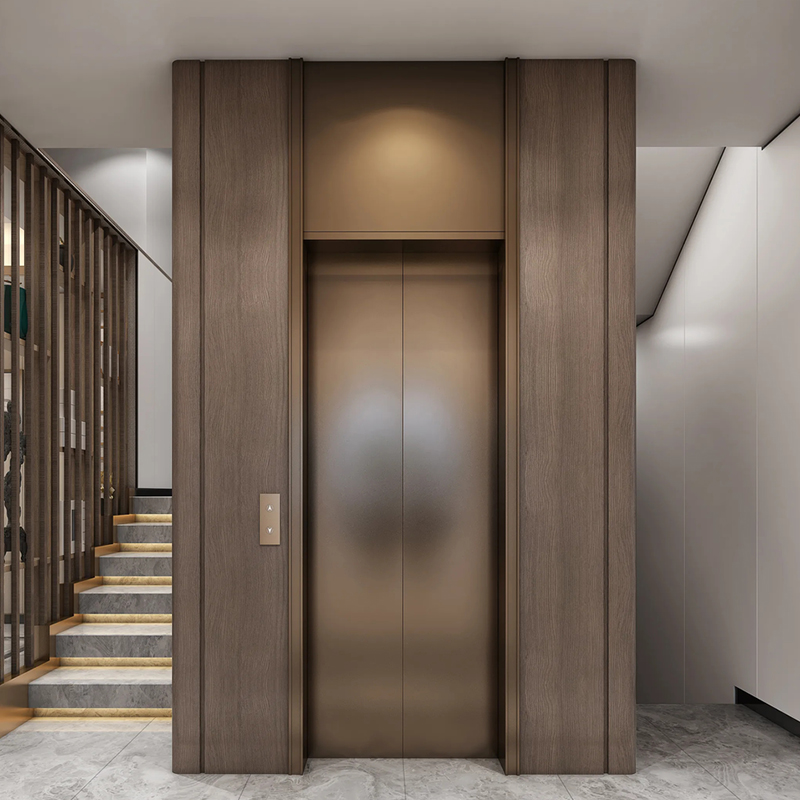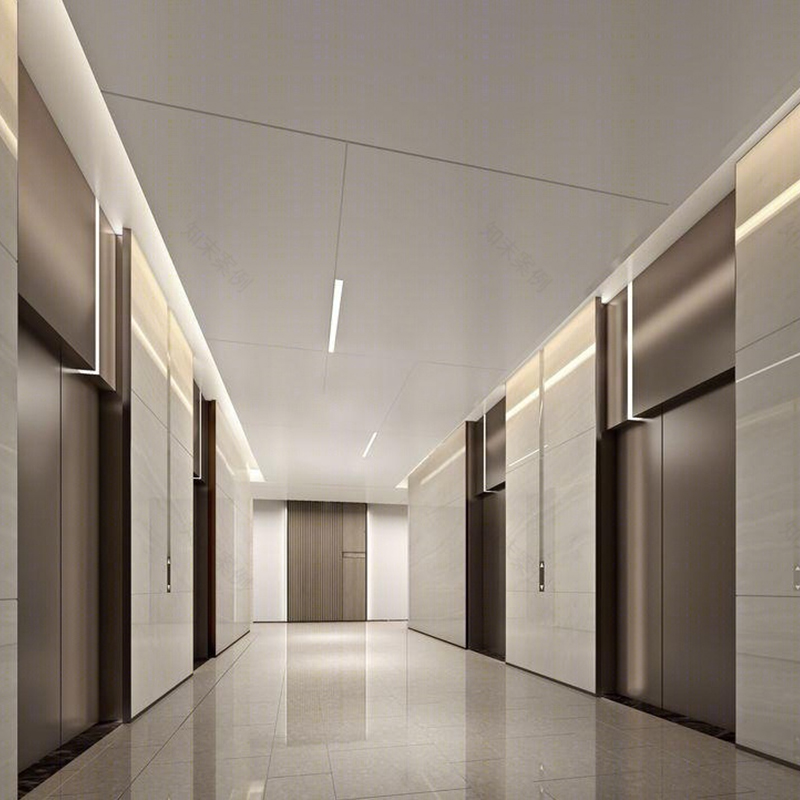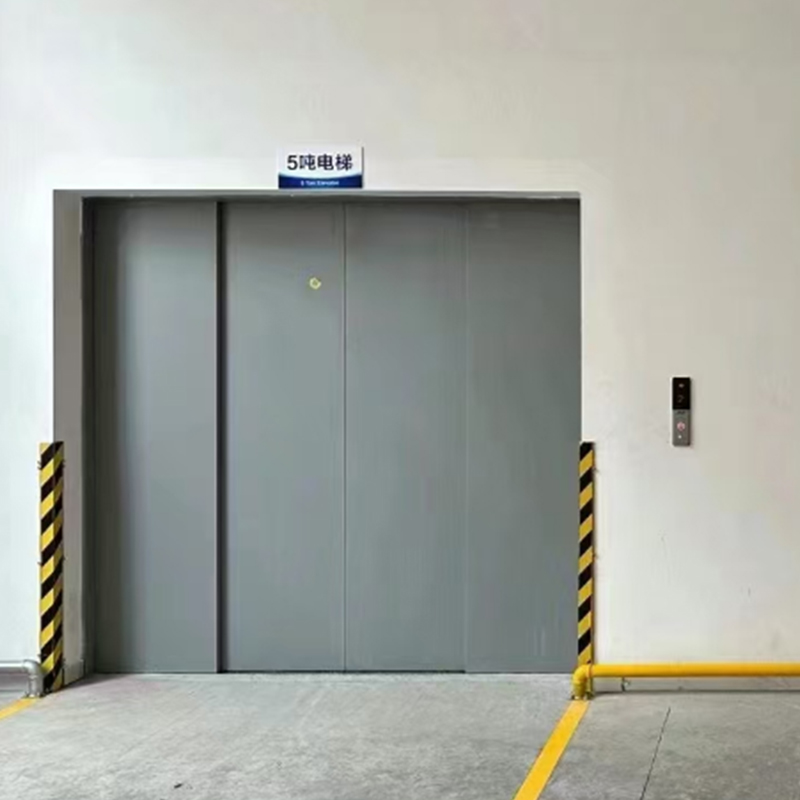
Hotel Energy-Efficient Passenger Elevators How does the speed limiter ensure safe and energy-saving operation?
Posted by Admin | 08 May
The structure and principle of the speed limiter are the basis for understanding its function. The speed limiter is mainly composed of a mechanical transmission part, an electrical control part and a brake component. The mechanical transmission part usually contains a centrifugal block or ball mechanism, which rotates with the operation of the elevator car. When the elevator car runs at normal speed, the block or ball of the speed limiter is in a relatively stable state under the action of centrifugal force, and keeps a certain distance from the trigger mechanism, and will not trigger the braking action. The electrical control part monitors the running speed of the speed limiter in real time and converts the mechanical movement into an electrical signal for analysis and processing.
Once the elevator car is overspeeding, the speed limiter will quickly take effect. As the speed of the car continues to increase, the centrifugal force on the block or ball of the speed limiter gradually increases. When the speed exceeds the preset safety threshold, the centrifugal force is sufficient to overcome the tension of the spring, and the block or ball is thrown outward, driving the trigger mechanism to act. The trigger mechanism is connected to the electrical control part, and at this time it will send an overspeed signal to the elevator control system. After receiving the signal, the elevator control system will immediately take corresponding measures, such as cutting off the power supply of the elevator motor to stop the motor from driving the car. At the same time, the trigger mechanism will also pull the linkage device of the safety clamp, so that the clamp block of the safety clamp quickly clamps the guide rail, forcing the car to stop moving, avoiding serious accidents such as falling caused by overspeed, and ensuring the safety of passengers.
The speed limiter is not only of great significance in ensuring safety, but also closely related to the energy-saving operation of hotel energy-efficient passenger elevators. The precise speed monitoring and control function of the speed limiter provides a stable foundation for the energy-saving operation of the elevator. When the speed limiter works normally, the elevator can maintain operation within a reasonable speed range, avoiding energy waste caused by unstable speed. For example, if the elevator frequently overspeeds and then brakes urgently, the motor needs to start and stop repeatedly, which consumes a lot of electricity. The speed limiter effectively avoids this situation, allowing the elevator motor to operate under relatively stable working conditions, thereby reducing energy consumption.
The speed limiter of modern hotel energy-efficient passenger elevators also incorporates the concept of energy saving in its design. Its mechanical transmission part uses low-friction materials and precision processing technology to reduce mechanical friction losses during operation. The electrical control part uses advanced sensors and intelligent control chips, which can monitor speed more accurately and reduce its own energy consumption. Moreover, by working in conjunction with other energy-saving systems of the elevator, the speed limiter can assist in adjusting the elevator's operating speed and acceleration according to the actual load of the elevator, further achieving energy-saving effects. For example, when the elevator is lightly loaded, the speed limiter cooperates with the control system to appropriately reduce the elevator's operating speed to reduce unnecessary energy consumption.
In order to ensure that the speed limiter is always in good working condition, daily maintenance and regular inspections are essential. The hotel needs to arrange professional elevator maintenance personnel to inspect and maintain the speed limiter according to the prescribed cycle. The maintenance personnel will first check the mechanical parts of the speed limiter to check whether the throw block, spring, shaft, etc. are worn, deformed or loose. If the parts are found to be severely worn, they will be replaced in time; for loose parts, they will be tightened to ensure the reliability of the mechanical transmission part. At the same time, the circuits, sensors and control chips of the electrical control part are tested to ensure the accuracy and stability of signal transmission. In addition, the speed limiter will be functionally tested to simulate the elevator overspeed situation and check whether the speed limiter can trigger the braking action in time and accurately to ensure the effectiveness of the safety function.
Even with perfect maintenance, the speed limiter may still fail during long-term operation. Common faults include mechanical parts stuck and abnormal electrical signal transmission. When the mechanical parts of the speed limiter are stuck, the speed limiter will not be able to monitor the elevator speed normally, and the brakes will not be triggered in time when the elevator is overspeeding, which poses a great safety hazard. At this time, the maintenance personnel need to carefully investigate the cause of the jam, which may be foreign matter entering between the components or excessive friction caused by insufficient lubrication. According to different reasons, measures such as cleaning foreign matter, adding lubricants or replacing damaged parts are taken to repair. If the electrical signal transmission is abnormal, the maintenance personnel need to use professional testing equipment to check whether there is a short circuit or open circuit in the line, whether the sensor fails, whether the control chip fails, and other problems, and carry out targeted repairs or replacements to restore the normal function of the speed limiter.
The hotel energy-saving passenger elevator speed limiter helps achieve energy-saving goals while ensuring the safe operation of the elevator through a unique structural design and working principle. Its maintenance and troubleshooting in daily operation are also crucial. Only by ensuring that the speed limiter is always in good working condition can the hotel's energy-saving passenger elevator continue to and stably provide guests with safe, efficient and energy-saving vertical transportation services, becoming a reliable guarantee for the hotel's green operation and high-quality services.
-
 Founding Road, Qidu Linhu Economic Zone, Wujiang City, Jiangsu Province, China
Founding Road, Qidu Linhu Economic Zone, Wujiang City, Jiangsu Province, China
-
 [email protected]
[email protected]
-
 +86 17701557926/+86 0512-63818375
+86 17701557926/+86 0512-63818375


 En
En English
English русский
русский Español
Español عربى
عربى





